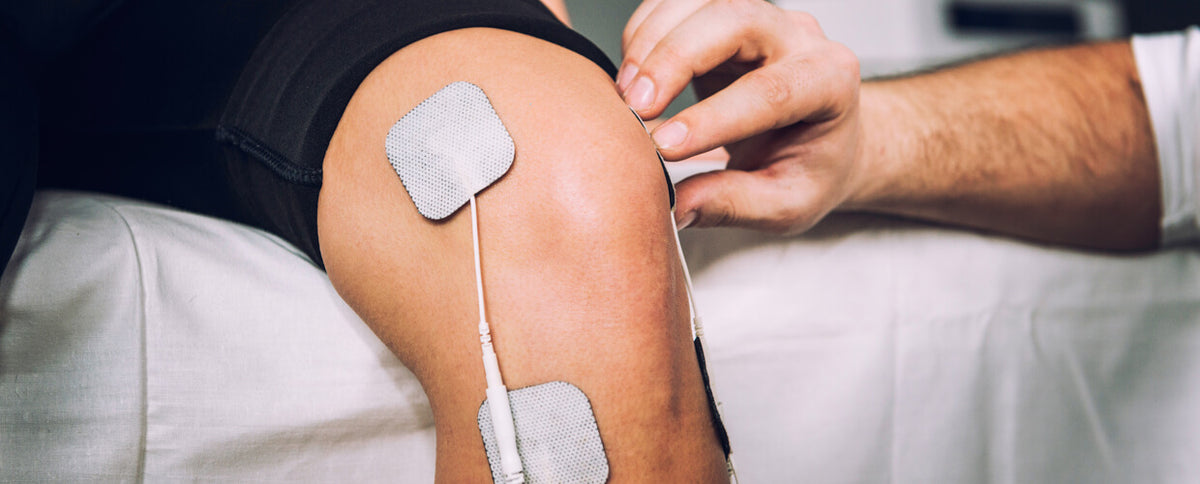Should You Do E-Stim Before, During, Or After Working Out?

When it comes to fitness, we're always looking for the edge that'll level up our performance and push us past the competition. Given that, it's no wonder recovery tools and therapies like foam rollers, cryotherapy, and infrared saunas (which help us get back in the game quick) are becoming increasingly popular. Now, there's a new kid on the recovery block: electrical muscle stimulation therapy, a.k.a. e-stim. Here, we'll break down what you need to know—and whether you should use it before, during, or after your workouts.
What Is Electrical Muscle Stimulation Therapy?
Technically called neuromuscular electrical stimulation (NMES), and also referred to as electrostimulation (EMS), the goal of e-stim is to stimulate contractions in your muscles.
How it works: You attach pads hooked up to an e-stim machine to your skin, and the machine sends electrical impulses to the nerves in your muscles, which causes them to contract, explains Dan Giordano, DPT and co-founder of Bespoke Treatments.
Why use e-stim to induce muscular contractions? “It can improve blood circulation, reduce muscle spasms, speed up recovery, help relieve pain, and initiate muscle fiber recruitment to strengthen or re-educate muscles,” Giordano says. Not only can this be valuable for anyone who works out hard, but also for those with injuries who need to 're-teach' their muscles to fire.
Related: Electrical Muscle Stimulation 101
Science supports e-stim's benefits, too. One French study, for example, found that soccer players who received electrostimulation for five weeks experienced performance benefits, including vertical jump height and sprint speed.
Another study, meanwhile, found that e-stim better supported recovery in college baseball pitchers between innings than rest or active recovery methods.
When To Use E-Stim
So, when can e-stim best benefit you? It depends on your goals, says Giordano.
Pre-Workout
Before you get your sweat on, electrical muscle stimulation therapy can jumpstart blood circulation. This helps increase blood and oxygen transport to the muscle, preparing it for activity just as a dynamic warm-up would.
Intra-Workout
When used during training, e-stim can help increase your muscles' efforts by recruiting more muscle fibers, ultimately making your workout more effective and efficient.
Post-Workout
Finally, when used after working out, e-stim can help bring fresh oxygen and blood into your muscles, facilitating toxin removal and helping to speed up recovery.
Using E-Stim Properly
In short, when used appropriately, e-stim can benefit pretty much every step of your fitness routine.
If you're interested in trying e-stim for yourself, consult with a physical therapist to learn the best practices, including where (and where not) to place those electricity-delivering pads. Giordano recommends avoiding placement of electrodes across the chest, anywhere above the neck, or near your genitals—and to avoid open wounds, rashes, or infected, red, or inflamed areas.
To really maximize electrical muscle stimulation therapy's benefits, have a professional administer it. However, you can also purchase lower-intensity machines, known as transcutaneous electrical stimulation (TENS) machines, for some DIY stim.
Support recovery and performance with Spartan gear, like foam rollers and resistance bands.




